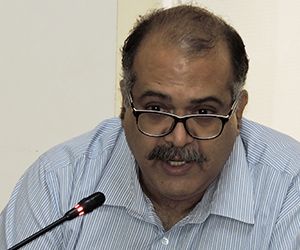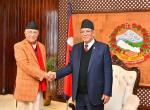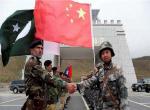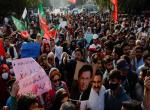Even though there have been occasional violations by Pakistani troops of the ceasefire agreement on the Line of Control (LoC) in Jammu and Kashmir, the recent flare-up has placed an enormous strain on the Confidence Building Measure (CBM) that had been mutually agreed by the two countries in late 2003. The violations of the ceasefire are no longer limited to either a small section of the LoC or to use of small arms but are taking place all along the LoC with higher calibre ammunition being used. What is more, the exchange of fire has continued unabated in one or the other sector of the LoC for nearly three weeks now. On the Indian side, the restraint that was being shown by the army in the face of regular provocations by the Pakistan army and its jihadist paramilitaries – pushing in infiltrators, firing on Indian positions, carrying out cross-LoC raids etc. –has now all but run its course. With the gloves coming off, the Indian Army has started to retaliate in a calibrated and proportionate manner.
The message being sent is clear: unless the Pakistanis back off (after all they started the shooting match with the killing of five Indian soldiers on the Indian side of the LoC), there is a clear and present danger of the ceasefire agreement collapsing. If this happens, things will return to the pre-ceasefire situation in which both sides suffered heavy casualties of not only troops but also civilians living close to the LoC. The problem for Pakistan is that open hostilities breaking out on its eastern front is the last thing that the over-stretched military can afford at this point in time. As it is, Pakistan is sinking in a sea of crises, not the least of which is a tanking economy, rampant terrorism, two and a half insurgencies (the Islamist one in Khyber Pakhtunkhwa and FATA, a separatist movement in Balochistan, and the stirrings of a nationalist insurgency in Sindh), abysmal state of law and order with sectarian violence and criminal mafias tearing the country apart. Add to this the looming spectre of instability and chaos post 2014 after the Western forces withdraw from Afghanistan. By all standpoints of normal rationality then, it just doesn’t make sense for Pakistan to ratchet up tension with India at this stage. Or does it?
Many Pakistani analysts, assuming an air of injured innocence to mislead both domestic and international opinion, wonder what Pakistan stands to gain by heating up the LoC, and that too at a time when the new government has expressed its keenness to reach out to India and normalise relations. Asides of the fact that Pakistan has been quite adept at playing both sides of the game – professing commitment to peace on the one hand and surreptitiously promoting terrorism and proxy war on the other hand – there are a number of reasons why the Pakistani military establishment, if not the entire Pakistani state machinery, could be turning normal rational behaviour on its head and actually coming to the conclusion that rising tension on the frontier with India serves not just the corporate interests of the Pakistan army but also the security and strategic interests of the Pakistani state.
The most benign explanation for the LoC flare-up is that the Pakistanis made a tactical miscalculation by crossing the LoC to attack an Indian patrol and kill 5 soldiers. The strident reaction from the Indian side hadn’t been factored in because for some time now such actions by the Pakistanis never evoked any major response from India. But this time things spiralled out of control and the pressure of public opinion coupled with the anger within the army forced the hand of the government to raise the ante and give back to Pakistan as good, if not better, than it got. With India refusing to back down or climb down from the escalation ladder, the Pakistanis might have bitten more than they can chew and are now trying to bring things back to normal. But this explanation doesn’t quite explain why, for a number of months now, the Pakistanis have been trying to reignite the flames of Jihad in Kashmir. The sharp rise in number of infiltration attempts, ceasefire violations and ambushes and attacks inside the state of Jammu and Kashmir suggests a more sinister game plan than just testosterone imbalance among Pakistani troops which made then indulge in needless adventurism along the LoC. Indeed, there are good reasons to believe that Pakistan could once again be preparing the ground for putting Jammu and Kashmir back on the boil and both the recent heating up of LoC as well as the spike in acts of terror within the state are part of this plan for Kashmir Jihad 2.0.
Yet another reason why the eastern front has become hot, while tangentially related to the issue of Kashmir, has to do with Pakistan’s domestic power play between the military establishment and the civilian government. The Pakistan army isn’t very comfortable with Nawaz Sharif at the helm of affairs and feels spooked by his emphasis on civilian supremacy over all policy matters. There is a widespread perception inside Pakistan that Nawaz Sharif is unlikely to let the army wield the veto on foreign and security policy and will sooner or later make a play for whittling down the military’s influence in domestic politics. If the army has to remain top dog, it must pull Nawaz Sharif down a few pegs. The best way for doing this is raising tensions with India, a ploy that catapults the army to the centre-stage, and allows it to acquire the image of the saviour of the nation in the face of a hostile India. Related to this is the discomfiture of the Pakistani military establishment with Nawaz Sharif’s desire for normalising relations with India. The overtures made by Nawaz Sharif to restart some sort of an engagement with India hasn’t gone down well with the army. There are reports of the Pakistan army chief Gen Ashfaq Kayani cautioning Nawaz Sharif not to be hasty in reaching out to India. Renewed hostilities along the LoC effectively sabotage the peace moves of Nawaz Sharif. In other words, the Pakistan military has killed two birds – arrested any possibility of political irrelevance and shot down Nawaz Sharif peace moves – with one stone – ramping up tension on LoC. For his part, Nawaz Sharif too is believed to have been spooked by the sudden rise in temperature on the eastern front. Whispers in corridors of power in Islamabad suggest that Nawaz Sharif and his close associates fear and suspect that the Pakistan army could be doing another ‘Kargil’ to him. He, therefore, is trying to play down the LoC incidents and not fall for the trap which he thinks has been set for him by the army.
Domestic politics aside, there are other advantages also that the Pakistani establishment could be hoping to reap from the rising tension with India. Hints of this came in a report by one of the embedded journalists who quoted an unnamed senior army officer as saying that Pakistan was considering withdrawing troops on the border with Afghanistan and redeploying them on the border with India. This is a thinly disguised ploy of inviting US intervention on Pakistan's side. At a time when the US is in withdrawal mode from Afghanistan and is to all intents and purposes outsourcing Afghanistan to Pakistan, the last thing it would want is for Pakistan to shift its focus from its western border to its eastern border, or so the Pakistanis calculate. The expectation is that the US will, at the very minimum, lean upon India to cool things down and there is also a reasonably good chance that it could also go a step further to press India to seek a Kashmir solution which satisfies Pakistan. This sort of Pakistani calculation fits in well with the old and tired narrative (but one which has once again acquired some traction) that the problem in Afghanistan is not one of radical Islam or Islamist terror but actually an India-Pakistan proxy war. This nonsensical narrative peddles the line that the road to Kabul runs through Kashmir and the end point of this is that once the Kashmir issue is settled, radical Islam will die a natural death and South Asia will transform into a land of milk and honey. Ratcheting up tensions with India on LoC is therefore the first step in drawing the attention of the international community, in particular the US, to the Kashmir issue.
What is important to note is that Pakistan is willing to dismantle its security grid against the Taliban in order to beef up its defences against India. At one level, this is tantamount to an acknowledgment that Pakistan sees India as a much greater threat to its existence than the terrorism and devastation caused by the Taliban, and as such punctures holes in the airy-fairy talk about internal threats (Taliban and Islamic radical groups) replacing India as the primary threat to Pakistan's security. At another level, such a redeployment of troops and shift of focus will help the Pakistani authorities create space for a dialogue, even a deal, with the Taliban. On their part, the Taliban (about whom the Pakistanis never tire of insinuating that they are being funded by India!) have announced that they will ‘defend Pakistan's borders’ from any Indian aggression and that while their fight against Pakistan army is for the sake of Islam, they would not allow the enemies of the country (India) to attack their homeland. India therefore serves as a perfect excuse for both the Taliban and Pakistani authorities to enter into an accommodation of sorts, which in turn will create the opening for a possible peace deal. That any such deal will probably be very tenuous and at best tactical is of course another matter. But in the immediate at least, it will reduce the violence inside Pakistan and as such provide breathing space to both the Pakistani authorities and the Taliban.
The big question is whether Prime Minister Nawaz Sharif is party to this double game, in which he plays good cop and is all sugar and honey to disarm India while his armed forces play bad cop to hurt and bleed India. His past record is rather mixed. The last time he was PM, Pakistan was merrily exporting terrorism into India even as he was engaging India in the Bus diplomacy. Members of his last cabinet used to openly hobnob with terrorist groups like Lashkar-e-Taiba and some of them provided support and sanctuary to Kashmiri terrorists. There are reports of his links with Osama bin Laden and his turning a blind eye to sponsoring of Jihad International by his handpicked ISI chiefs. In his first term as PM, the ISI carried out the serial bomb blasts in Mumbai in 1993. In his second term, there was Kargil and other acts of terrorism. Even in the last five years, his party’s government in Punjab has been funding the activities of the parent organisation of LeT, Jamaatud Dawa, from the provincial budget.
Of course, if Nawaz Sharif is the changed man that many claim he is then he will need to prove his bona fides about wanting to improve relations with India by acting against his own jihadists, both the uniformed variety and the ones in Shalwar-Kameez. Until Nawaz Sharif walks the talk on peace with India, he can never be considered a credible partner in the normalisation process. India, meanwhile, must respond and react appropriately and proportionately to any and every provocation from Pakistan. Equally important, India needs to disabuse the West (especially the US) of any notions it might be harbouring of playing a mediatory role between India and Pakistan on the issue of Jammu and Kashmir. The US must be made to understand that if it couldn’t pressure Pakistan into stopping support for the Taliban despite the heavy cost such a Pakistani policy was imposing on the US in men, money and material, then there is not much traction it will get from India on Jammu and Kashmir or for that matter on Pakistan.
Published Date: 27th August 2013, Image Source: http://images.thenews.com.pk









Post new comment